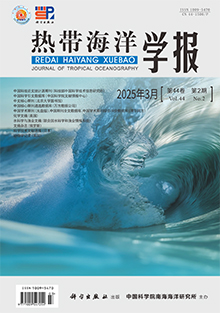|
|
Abundance and biomass of deep-sea meiofauna in the northern South China Sea
LIU Xiao-shou, XU Man, ZHANG Jing-huai, MU Gang, LIU Dan, LI Xiao
Journal of Tropical Oceanography
2014, 33 (2):
52-59.
DOI: 10.11978/j.issn.1009-5470.2014.02.007
Meiofauna and environmental variables were sampled and analyzed at five deep-sea stations and one shallow-sea station in the northern South China Sea in September 2010. A total of 10 taxa of meiofauna were identified, including Nematoda, Copepoda, Polychaeta, Ostracoda, nauplii, Tanaidacea, Oligochaeta, Turbellaria, Aplacophora, and Isopoda. Nematoda was the most dominant group, accounting for 94.72% of the total meiofauna abundance, followed by Copepoda (2.70%), Polychaeta (1.62%) and other taxa that only account for 0.96%. In terms of biomass, Nematoda accounts for 53.83%, followed by Polychaeta (32.17%), Copepoda (7.14%) and other taxa that account for 6.85%. The average abundance and dry biomass of meiofauna were 566.12±635.61 ind·(10cm2)-1 and 398.43±431.98 µg·(10cm2)-1, respectively. Those of Nematoda were 536.21±593.48 ind·(10cm2)-1 and 214.48±237.39 µg·(10cm2)-1, respectively. Results of correlation analysis between abundance of nematode, copepod, polychaete, total meiofauna, biomass of total meiofauna and environmental factors showed that the main factors controlling nematode abundance, meiofaunal abundance and biomass were bottom-water pH, silt-clay percentage and sediment organic matter. Results of one-way analysis of variance (ANOVA) showed that there were significant differences for nematode abundance, copepod abundance, total meiofauna abundance, and biomass at different stations. Compared with the Bohai Sea, northern Yellow Sea, southern Yellow Sea, Yangtze River Estuary, Nha Trang Bay (Vietnam), Daya Bay, Beibu Gulf, and the coastal areas of South China Sea, the abundance and biomass of meiofauna in the present study were lower.
Reference |
Related Articles |
Metrics |
Comments(0)
|
|




